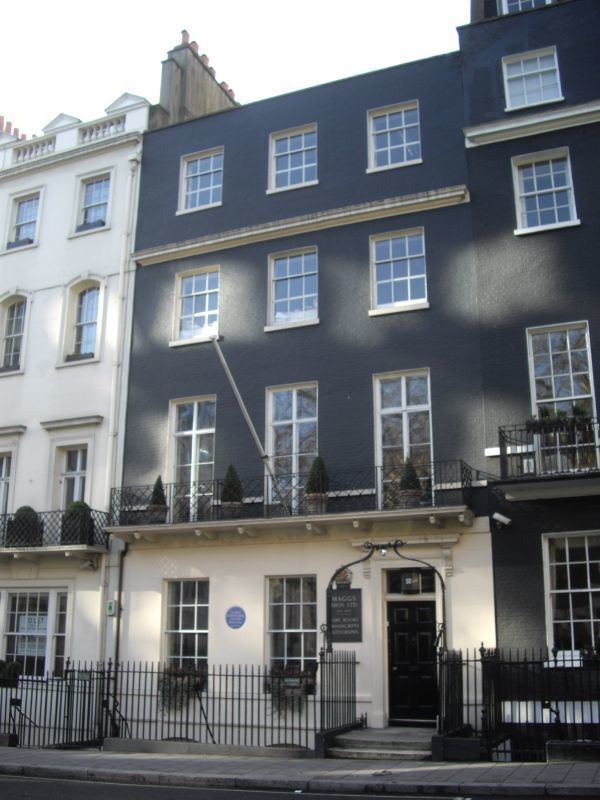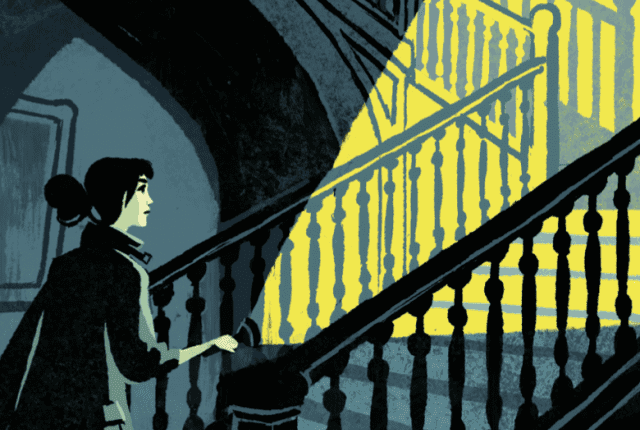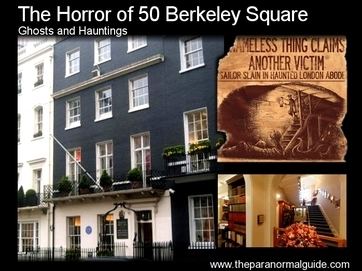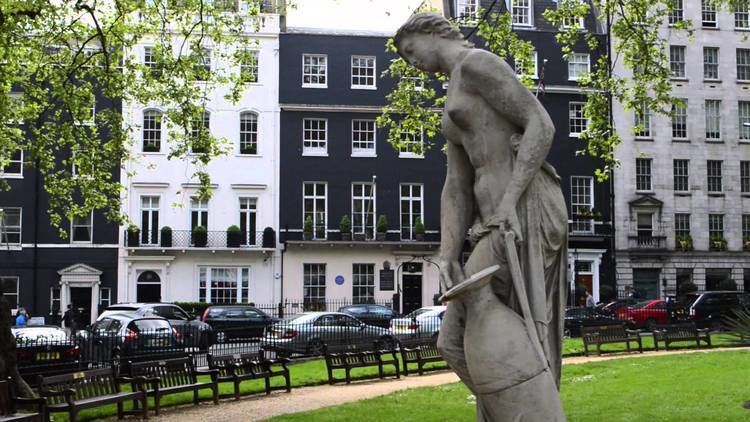 | ||
Similar Union Cemetery, Pickens County Courthouse, Borley Rectory, George Stickney House, Monte Cristo Homestead | ||
50 Berkeley Square is a reportedly haunted townhouse on Berkeley Square in Mayfair, Central London. In the late 19th Century, it became known as one of the most haunted houses in London. Researchers have since suggested an entirely rationalistic explanation for the alleged 'haunting' phenomena that involved the house occupant, Thomas Myers. It has also been noted that many of the stories about the house were exaggerated or invented by later ghost-writers.
Contents
- Assassin s creed syndicate 50 berkeley square
- History and occupants
- Legend
- Skeptical reception
- References

Assassin s creed syndicate 50 berkeley square
History and occupants

The four-story brick townhouse was constructed in the late eighteenth/early nineteenth century. Until 1827 it was the home of British Prime Minister George Canning, commemorated by a plaque on the house today. The house was later occupied by Miss Elizabeth Curzon, who died in 1859, aged 90.

An eccentric "Mr. Myers" acquired the house in 1859. He was a recluse who never went outside, only answering the door to receive food from his servant.. It is suspected that Mr. Myers was Thomas Myers, the son of a member of parliament.

It was later bought by BP. From 1937 to 2015, the building was occupied by Maggs Bros, a firm of antiquarian book dealers. In 1998 the building was thought to be the oldest unaltered building in London.
Legend

Legend varies, but mostly states that the attic room of the house is haunted by a spirit of a young woman who committed suicide there. She purportedly threw herself from a top floor window after being abused by her uncle; and is said to be capable of frightening people to death. The spirit is said to take the form of a brown mist; though sometimes it is reported as a white figure. A rarer version of the tale is that a young man was locked in the attic room, fed only through a hole in the door, until he eventually went mad and died. One story states that the attic room is haunted by the ghost of a little girl that was killed by a sadistic servant in that room. At least two deaths were attributed.
From 1859 until the early 1870s, Mr. Myers, who had been rejected by his fiancée lived in the house. It was said that he would lock himself inside and slowly went mad over the rest of his life. During his stay at the house, it fell into gross disrepair and it is during this time that its reputation began to build. Myers died in 1874.
It is alleged that as a bet, in 1872, Lord Lyttleton stayed a night in the building's attic. He brought his shotgun with him, and during the night fired at an apparition. In the morning, he attempted to find the apparition, but could only find shotgun cartridges. The next year the local council brought a summons to the house's owners for failure to pay taxes, but due to the house's reputation as haunted they were not prosecuted.
A 1879 journalist piece for the Mayfair Magazine sensualized a story about the house. It was alleged that a maid who stayed in the attic room had been found mad and died in an asylum the day after.
It was also alleged that after one nobleman had spent the night in the attic room, he was so paralysed with fear that he couldn't speak.
In 1887, it was alleged that sailors from HMS Penelope stayed a night in the house. By morning one was found dead, having tripped as he ran from the house. The other reported having seen the ghost of Mr. Myers, approaching them aggressively.
Modern interest in the site was spurred by its inclusion in Peter Underwood's 1975 book, Haunted London.
No phenomena have been reported since the house was bought by the Maggs Brothers in the late 1930s and though many contemporary media outlets reported happenings at the house, more recent investigators claim nothing unusual has ever taken place there. They remark that Lord Lytton's story "The Haunted and the Haunters" bears a remarkable resemblance to the supposed hauntings at 50 Berkeley Square.
Skeptical reception
There were three correspondences about 50 Berkeley Square in the Notes and Queries journal (1872-3, 1879, and 1880-1). Some of which concluded that the neglect of the house had inspired many imaginative stories about hauntings.
In her 1906 autobiography, Lady Dorothy Nevill stated that "Mr. Myers" was a relative of hers. After losing his fiancé, his behaviour "bordered upon lunacy" and he stayed in the house all day, becoming active at nights where he would ramble about making strange sounds. According to Nevill the "old house would occasionally appear to be lit up at the dead of night." These nocturnal activities of Myers were considered by Nevill to have been misinterpreted by others as the result of a ghost. She concluded that the haunting had no factual basis and the "whole story was nonsense".
Modern researchers have suggested that the house was never haunted and that many of the stories were either exaggerated or invented by later ghost-story writers. For example the claim that sailors entered the house in the 1870s was invented by Elliott O'Donnell and there is no evidence to confirm any part of the story.
